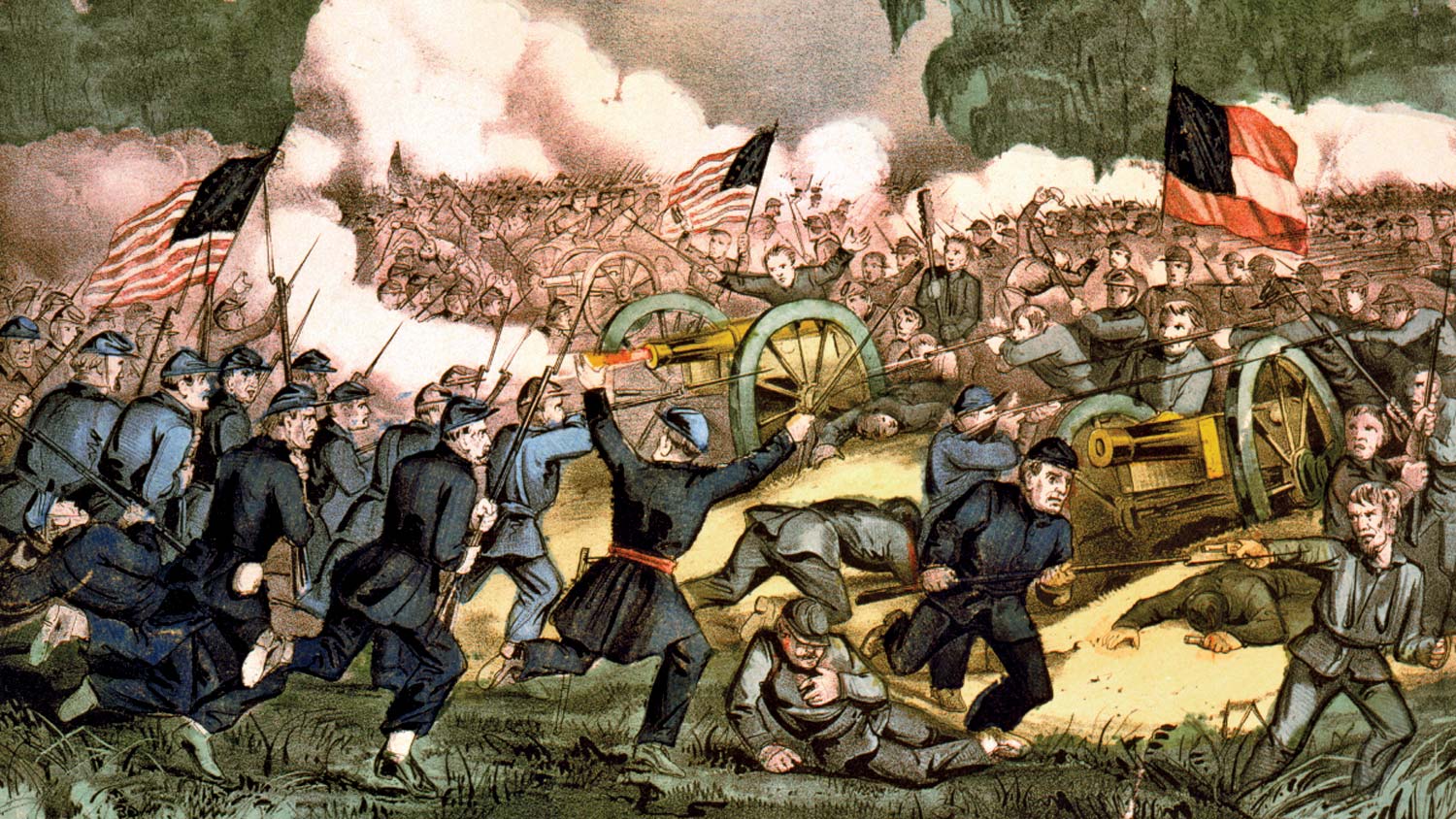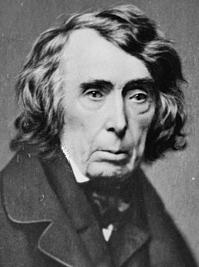About Publications Library Archives
heritagepost.org

Preserving Revolutionary & Civil War History

Preserving Revolutionary & Civil War History

Slavery arrived in North America along side the Spanish and English colonists of the 17th and 18th centuries, with an estimated 645,000 Africans imported during the more than 250 years the institution was legal. But slavery never existed without controversy. The British colony of Georgia actually banned slavery from 1735 to 1750, although it remained legal in the other 12 colonies. After the American Revolution, northern states one by one passed emancipation laws, and the sectional divide began to open as the South became increasingly committed to slavery. Once called a “necessary evil” by Thomas Jefferson, proponents of slavery increasingly switched their rhetoric to one that described slavery as a benevolent Christian institution that benefited all parties involved: slaves, slave owners, and non-slave holding whites. The number of slaves compared to number of free blacks varied greatly from state to state in the southern states. In 1860, for example, both Virginia and Mississippi had in excess of 400,000 slaves, but the Virginia population also included more than 58,000 free blacks, as opposed to only 773 in Mississippi. In 1860, South Carolina was the only state to have a majority slave population, yet in all southern states slavery served as the foundation for their socioeconomic and political order.

In the growth years following the 1803 Louisiana Purchase, Congress was compelled to establish a policy to guide the expansion of slavery into the new western territory. Missouri’s application for statehood as a slave state sparked a bitter national debate. In addition to the deeper moral issue posed by the growth of slavery, the addition of pro-slavery Missouri legislators would give the pro-slavery faction a Congressional majority.
Ultimately, Congress reached a series of agreements that became known as the Missouri Compromise. Missouri was admitted as a slave state and Maine was admitted as a free state, preserving the Congressional balance. A line was also drawn through the unincorporated western territories along the 36°30′ parallel, dividing north and south as free and slave.
Thomas Jefferson, upon hearing of this deal, “considered it at once as the knell of the Union. It is hushed indeed for the moment. But this is a reprieve only, not a final sentence. A geographical line, coinciding with a marked principle, moral and political, once conceived and held up to the angry passions of men, will never be obliterated; and every new irritation will mark it deeper and deeper.”
In August of 1831, a slave named Nat Turner incited an uprising that spread through several plantations in southern Virginia. Turner and approximately seventy cohorts killed around sixty white people. The deployment of militia infantry and artillery suppressed the rebellion after two days of terror.
Fifty-five slaves, including Turner, were tried and executed for their role in the insurrection. Nearly two hundred more were lynched by frenzied mobs. Although small-scale slave uprisings were fairly common in the American South, Nat Turner’s rebellion was the bloodiest.
Virginia lawmakers reacted to the crisis by rolling back what few civil rights slaves and free black people possessed at the time. Education was prohibited and the right to assemble was severely limited.
The Wilmot Proviso was a piece of legislation proposed by David Wilmot (D-FS-R PA) at the close of the Mexican-American War. If passed, the Proviso would have outlawed slavery in territory acquired by the United States as a result of the war, which included most of the Southwest and extended all the way to California.
Wilmot spent two years fighting for his plan. He offered it as a rider on existing bills, introduced it to Congress on its own, and even tried to attach it to the Treaty of Guadalupe Hidalgo. All attempts failed. Nevertheless, the intensity of the debate surrounding the Proviso prompted the first serious discussions of secession.
With national relations soured by the debate over the Wilmot Proviso, senators Henry Clay and Stephen Douglas managed to broker a shaky accord with the Compromise of 1850. The compromise admitted California as a free state and did not regulate slavery in the remainder of the Mexican cession all while strengthening the Fugitive Slave Act, a law which compelled Northerners to seize and return escaped slaves to the South.
While the agreement succeeded in postponing outright hostilities between the North and South, it did little to address, and in some ways even reinforced, the structural disparity that divided the United States. The new Fugitive Slave Act, by forcing non-slaveholders to participate in the institution, also led to increased polarization among centrist citizens.
Harriet Beecher Stowe’s fictional exploration of slave life was a cultural sensation. Northerners felt as if their eyes had been opened to the horrors of slavery, while Southerners protested that Stowe’s work was slanderous.
Uncle Tom’s Cabin was the second-best-selling book in America in the 19th century, second only to the Bible. Its popularity brought the issue of slavery to life for those few who remained unmoved after decades of legislative conflict and widened the division between North and South.
The Kansas-Nebraska Act of 1854 established Kansas and Nebraska as territories and set the stage for “Bleeding Kansas” by its adoption of popular sovereignty. Under popular sovereignty, it is the residents of the territories who decide by popular referendum if the state is to be a free or enslaved. Settlers from the North and the South poured into Kansas, hoping to swell the numbers on their side of the debate. Passions were enflamed and violence raged. In the fall of 1855, abolitionist John Brown came to Kansas to fight the forces of slavery. In response to the sacking of Lawrence by border ruffians from Missouri whose sole victim was an abolitionist printing press, Brown and his supporters killed five pro-slavery settlers in the Pottawatomie Creek Massacre in Kansas in May, 1856. Violence existed in the territory as early as 1855 but the Sack of Lawrence and the Pottawatomie Creek Massacre launched a guerilla war between pro-slavery and anti-slavery forces. Although the violence was often sporadic and unorganized, mass feelings of terror existed in the territory. Although President Buchanan tried to calm the violence by supporting the Lecompton Constitution, his relentless support for this constitution created a political crisis among the Democratic Party and only further aggravated sectional tensions. The violence subsided in 1859, the warring parties forged a fragile peace, but not before more than 50 settlers had been killed.

Dred Scott was a Virginia slave who tried to sue for his freedom in court. The case eventually rose to the level of the Supreme Court, where the justices found that, as a slave, Dred Scott was a piece of property that had none of the legal rights or recognitions afforded to a human being.
The Dred Scott Decision threatened to entirely recast the political landscape that had thus far managed to prevent civil war. The classification of slaves as mere property made the federal government’s authority to regulate the institution much more ambiguous.
Southerners renewed their challenges to the agreed-upon territorial limitations on slavery and polarization intensified.
In 1858, Democratic Senator Stephen Douglas faced a challenge for his seat from a relatively unknown one term former congressmen and “prairie lawyer” Abraham Lincoln. In the campaign that followed Lincoln and Douglas engaged in seven public debates across the state of Illinois where they debated the most controversial issue of the antebellum era: slavery. Although Douglas won the senate race, these debates propelled Lincoln to the national spotlight and enabled his nomination for president in 1860. In contrast, these debates further alienated Douglas from the southern wing of the Democratic Party and the arguments Douglas made in these debates come back to haunt him in 1860 destroying his presidential chances.
Abolitionist John Brown supported violent action against the South to end slavery and played a major role in starting the Civil War. After the Pottawatomie Massacre during Bleeding Kansas, Brown returned to the North and plotted a far more threatening act. In October 1859, he and 19 supporters, armed with “Beecher’s Bibles,” led a raid on the federal armory and arsenal at Harpers Ferry, Virginia, in an effort to capture and confiscate the arms located there, distribute them among local slaves and begin armed insurrection. A small force of U.S. Marines, led by Col. Robert E. Lee, put down the uprising. There were casualties on both sides; seven people were killed and at least 10 more were injured before Brown and seven of his remaining men were captured. On October 27, Brown was tried for treason against the state of Virginia, convicted and hanged in Charles Town on December 2.
Abraham Lincoln was elected by a considerable margin in 1860 despite not being included on many Southern ballots. As a Republican, his party’s anti-slavery outlook struck fear into many Southerners.
On December 20, 1860, a little over a month after the polls closed, South Carolina seceded from the Union. Six more states followed by the spring of 1861.
With secession, several federal forts, including Fort Sumter in South Carolina, suddenly became outposts in a foreign land. Abraham Lincoln made the decision to send fresh supplies to the beleaguered garrisons.
On April 12, 1861, Confederate warships turned back the supply convoy to Fort Sumter and opened a 34-hour bombardment on the stronghold. The garrison surrendered on April 14.
The Civil War was now underway. On April 15, Lincoln called for 75,000 volunteers to join the Northern army. Unwilling to contribute troops, Virginia, Arkansas, North Carolina, and Tennessee dissolved their ties to the federal government.